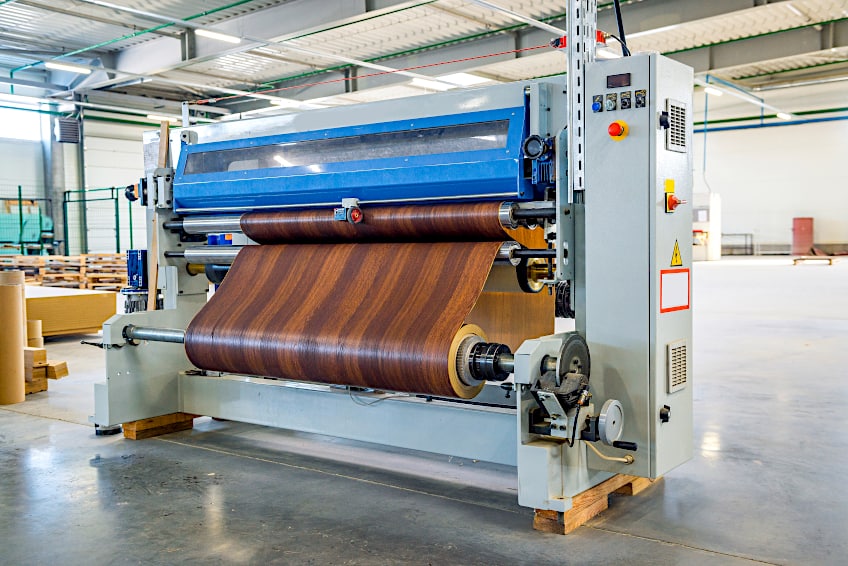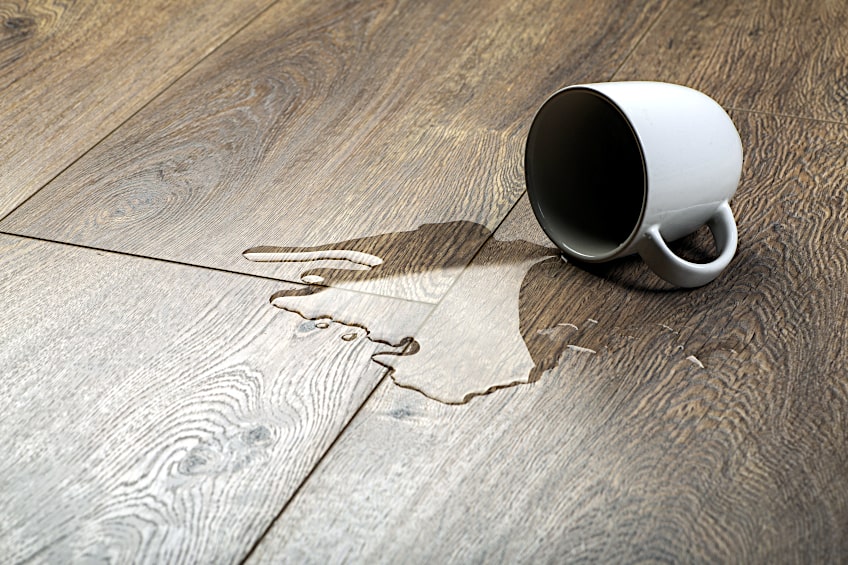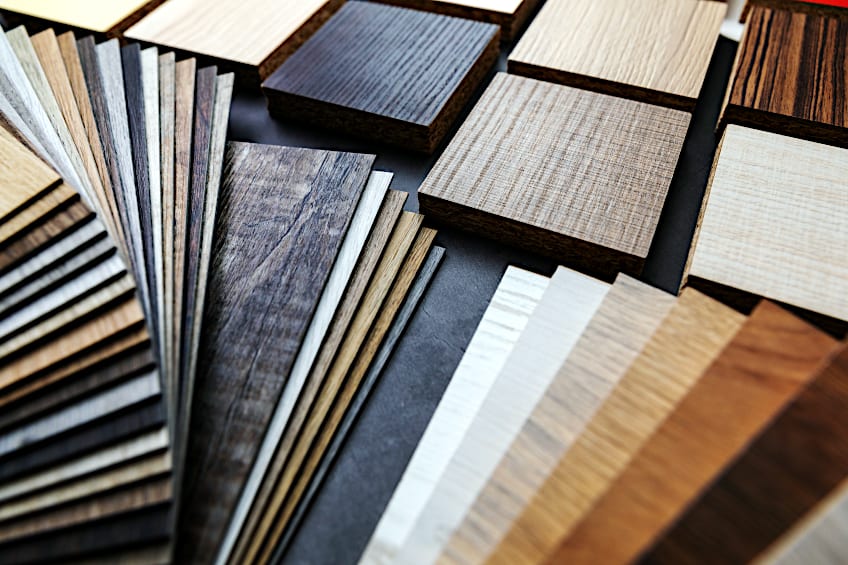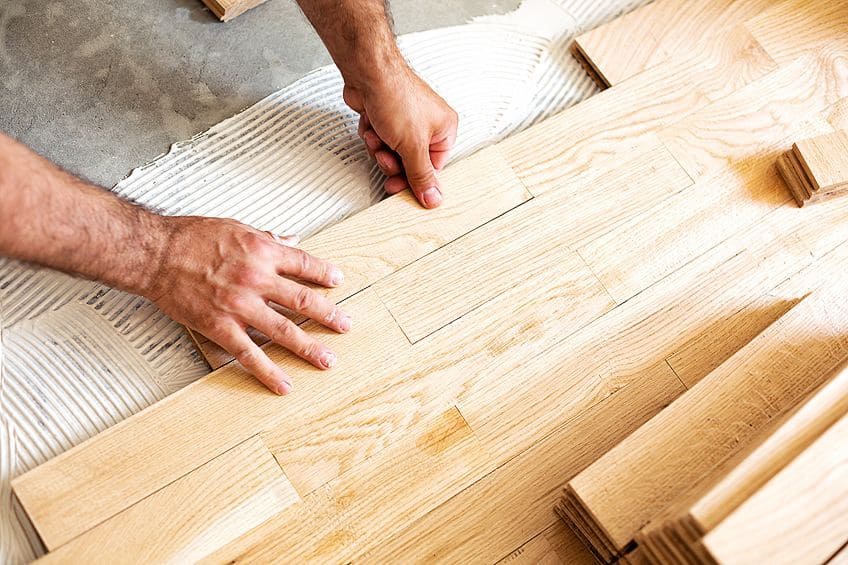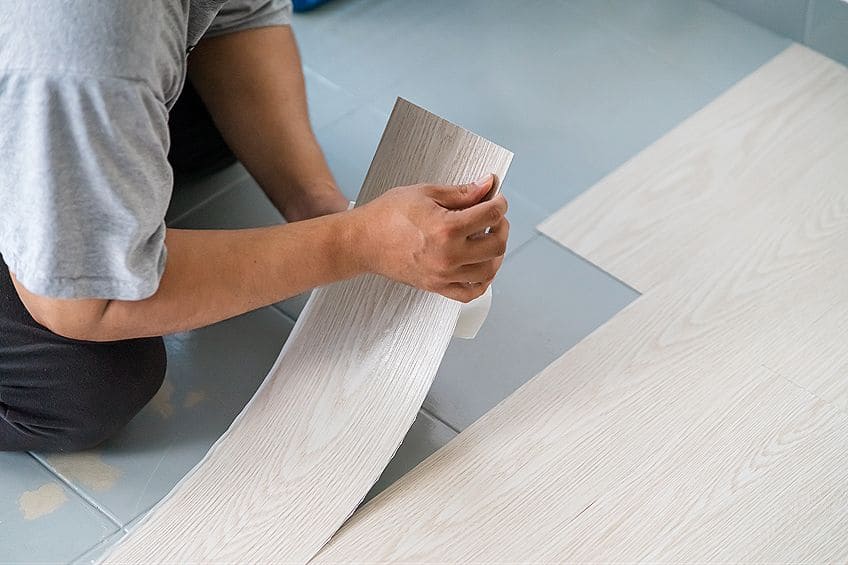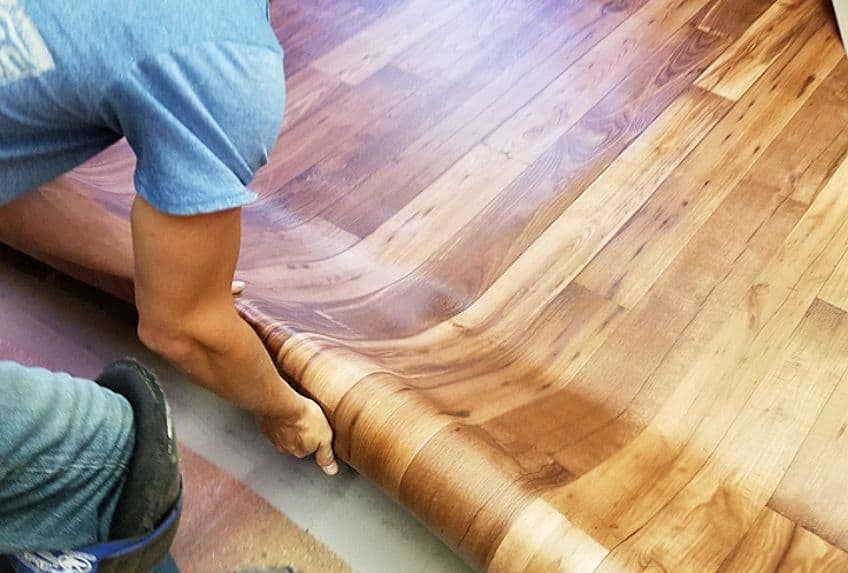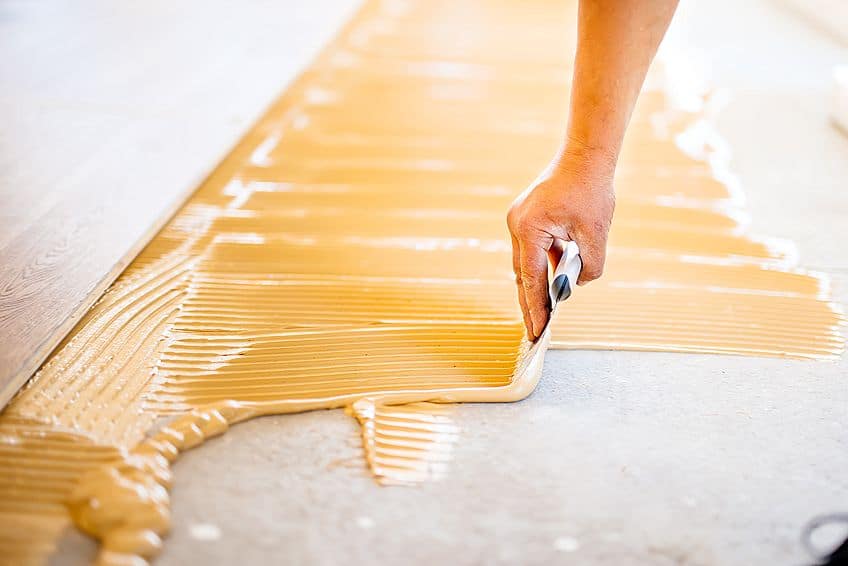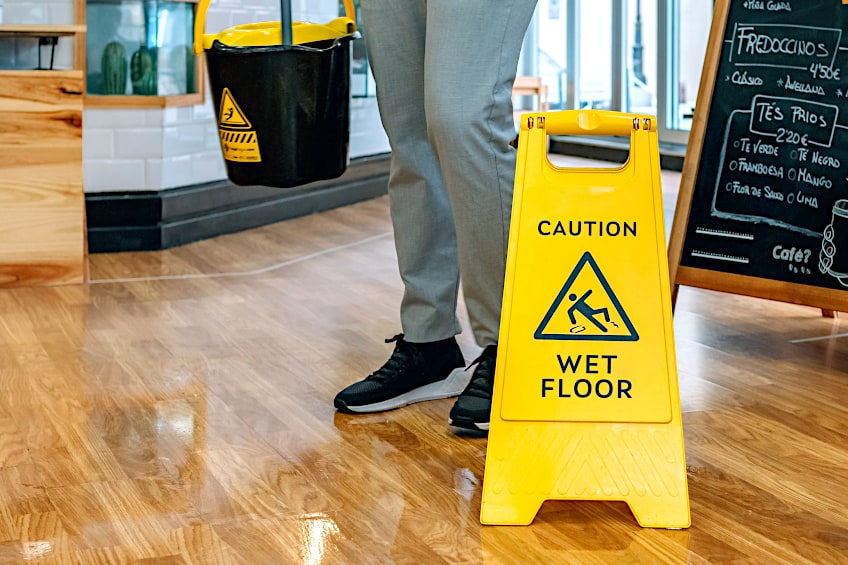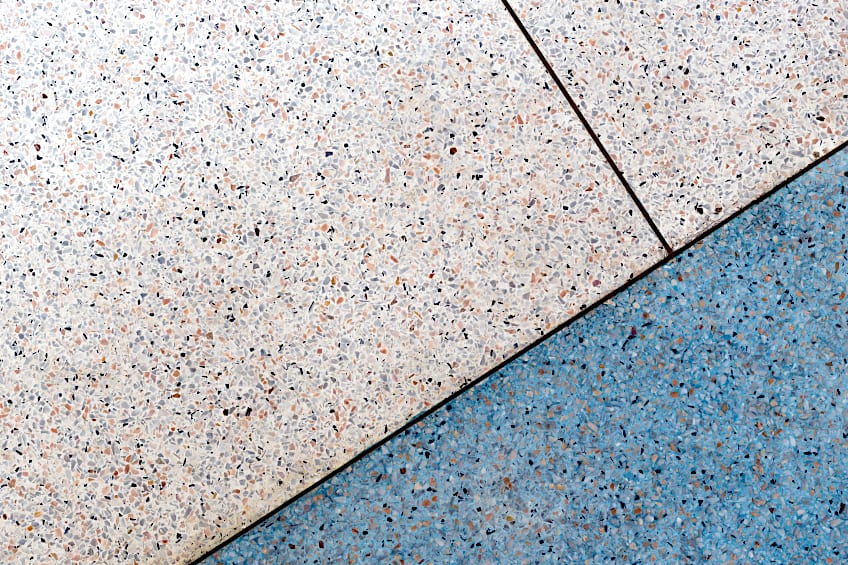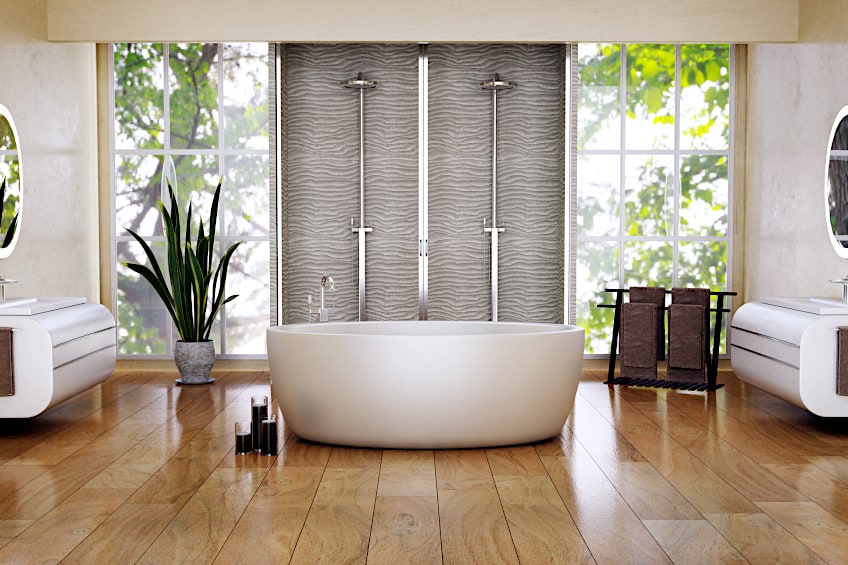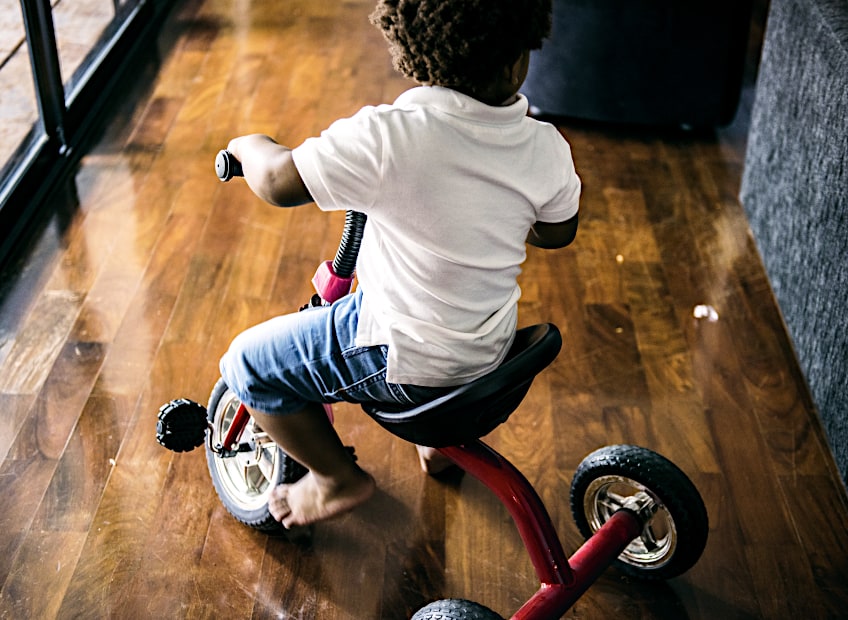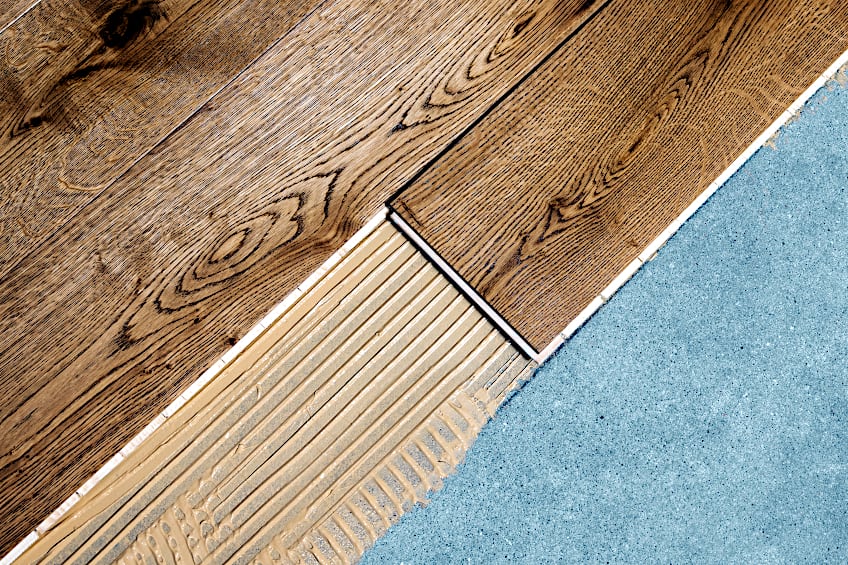Laminate vs. Vinyl Flooring – Which Affordable Flooring to Choose
This post may contain affiliate links. We may earn a small commission from purchases made through them, at no additional cost to you. You help to support resin-expert.com
Flooring has become a focal point in recent years. Some of the most popular flooring options today are laminate and vinyl flooring. But what are they exactly? There are good arguments on both sides of the ongoing laminate vs. vinyl flooring debate, and it can be challenging to decide which is better for your space. This is why we’ve prepared a detailed comparison of the laminate vs. vinyl flooring debate, so you can easily choose which flooring option is right for you!
Table of Contents
Understanding Laminate Flooring
Laminate flooring is one of the most commonly used flooring types in modern homes. If you don’t know what laminate is, it is essentially a type of engineered wood, which is basically wood particles that have been squashed together with adhesives and heat pressed to form a “solid” board. This board then receives an underlayer at the bottom, as well as wear and laminate layers on top.
Laminate has a wood print veneer layer underneath the wear layer. The idea is to make laminate flooring look like real wood, with the printed layer imitating the grain and color of a certain wood type, which you’ll be able to choose. Laminate is generally used as an alternative to hardwood flooring because it is far less expensive and requires much less maintenance.
Laminate flooring is also highly customizable and can be cut to different thicknesses and lengths to ensure it fits a space. Because laminate boards are far easier to work with compared to hardwood flooring the installation process is often quicker, less labor intensive, and is generally far less expensive. These are just some of the reasons that laminate board flooring is so popular. Laminate board is the weapon of choice for DIY enthusiasts the world over. This isn’t just due to its ease of installation and price, but because it can be made to look like any wood species and installation can be done without the need for intimate knowledge of wood crafting.
Additionally, laminate flooring can be paired with underfloor heating, lighting, and even sound-insulating materials.
Advantages of Laminate Flooring
There are many obvious advantages to laminate flooring, especially when compared to traditional hardwood flooring. For starters, it literally has a top layer called a wear layer that has been designed to soak up as much damage as possible without compromising the integrity of the board. Laminate flooring is highly durable and is capable of resisting both impact and abrasion with very little effort.
- Extremely durable
- Stain resistant and sheds moisture easily
- Virtually maintenance-free and easy to clean
- A very affordable flooring option
- Highly customizable composition and aesthetics
Extremely Durable
Its degree of durability makes laminate flooring a great choice for highly trafficked areas like living rooms or entryways. If you have little ones running around or lively pets, scratch marks, and dents will not be a problem for you.
If you are concerned about things like heat and moisture you can rest assured knowing that laminate flooring also has you covered in these areas.
Resistant to Moisture
Laminate flooring might not be waterproof, but it is highly resistant to moisture whether it be in the form of droplets or water that has pooled up in a single spot. This resistance is limited, and water can still seep between joints if they haven’t been sealed, but if you spill some coffee on the surface, you’ll be able to clean up quickly without having to worry about stains or warpage.
Easy to Clean and Maintain
Speaking of cleaning, hardwood flooring can be a real challenge to clean and maintain. Laminate flooring has a significantly lower surface friction and smoother texture than hardwood flooring though, making it extremely easy to clean and virtually maintenance-free aside from the odd dusting and cleaning with a mop. A very convenient floor type!
Extremely Affordable
Aside from being durable and easy to live with, one of the most attractive things about laminate flooring is how affordable it is.
Laminate flooring is rather inexpensive when compared to hardwood flooring and even tiling.
Its affordability has made laminate flooring a more accessible flooring option for those in the market for quality flooring but don’t want to spend excessive amounts of money.
Highly Customizable
Laminate flooring also provides you with a lot of freedom regarding the design of the board, its internal composition, and the size of the boards. This means that your laminate flooring can be custom-made to fit a specific application or to suit the look and feel of the space you intend to fit it into.
This advantage extends to many other types of engineered wood as well!
Limitations of Laminate Flooring
Just as there are some notable advantages to laminate flooring there are also some glaring limitations that are inherent to the material. After all, there is no such thing as the perfect material, and if you intend to use laminate flooring you should familiarize yourself with some of these limitations to avoid installing the incorrect flooring for your needs.
- Moisture sensitivity
- Susceptibility to warping
- Difficult to repair
Moisture Sensitivity
While laminate flooring is capable of handling moisture on its surface for a short period of time, it cannot handle pools of moisture present on the surface for prolonged periods of time.
The seals between the joins will eventually give in causing moisture to seep underneath the board which can eat away at the adhesive that holds the wood fibers together.
Its engineered wood substrate’s weakness makes laminate a decidedly bad choice for moisture-rich environments.
Susceptible to Warping
While water or airborne moisture is bad for laminate flooring, excessive amounts of heat can also be bad. Heat exceeding a certain threshold can cause laminate flooring to warp, affecting individual panels, which can cause others to crack as a result.
Again, assessing the environment and the intended application of laminate can save you a lot of time and money later on.
Difficult to Repair
If your laminate flooring does get damaged it can be a bit frustrating to repair. Laminate is secured using tongue and groove joins, which means that if one panel is warped or cracked it can be replaced. However, finding a panel that matches the existing ones can be challenging depending on the age and intricacy of the board and pattern.
Exploring Vinyl Flooring
The primary difference between vinyl and laminate flooring is that while laminate flooring is essentially engineered wood coated with a protective layer, vinyl flooring is completely synthetic in nature. The base of most vinyl flooring is usually fiberglass, which then has PVC and a layer of plasticizer popped on top of it. These materials make vinyl extremely durable.
Vinyl flooring is available in both whole sheets and tiles that you can have installed professionally or you can simply cut them up and install them on your own, given that you know how to go about it correctly. To ensure that vinyl flooring looks good, a print layer is applied to the top, and just like with laminate, wear, and anti-slip layers are applied on top of the print.
The anti-slip layer is usually a polyurethane layer, making it even more durable. Unlike laminate flooring which usually comes with an underlayer preinstalled, laminate does not, and having this layer added to your sheets or tiles might cost a bit extra depending on where you are getting your materials from. It might cost a bit extra too, so keep this in mind.
Vinyl flooring can also be found in plank form. As you might have guessed, these are just plank-like boards created from vinyl. These usually consist of a much thicker core compared to tile and sheet variations, cores that usually contain PVC to ensure they are able to handle the added weight and ensure the material is nice and rigid.
As you can see, there are quite a few similarities between laminate flooring and vinyl flooring, and they’re often used for similar applications.
Vinyl flooring does appear to be slightly sleeker and has a less prominent surface texture when compared to laminate, but generally, vinyl flooring is used for pretty much the same applications as laminate.
Types of Vinyl Flooring
As we mentioned previously, vinyl is the material, but it can be made into different shapes and thicknesses to suit different applications. Vinyl flooring usually consists of luxury vinyl tile (LVT), luxury vinyl plank (LVP), and sheet vinyl, all of which are made of the same base material, but differ in their intended applications and thicknesses.
Luxury Vinyl Tile
This is pretty much just what the name implies, in that it is a material that has been designed to imitate tile.
Luxury vinyl tile can be printed with an overlay of virtually any tile including the ever-popular stone and marble.
However, it is far more durable, requires far less maintenance, and costs far less than its real-life counterparts.
Vinyl Sheets
Vinyl sheets are, well, sheets made of vinyl. It is essentially one long, continuous sheet that can be applied over a flooring substrate and cut to fit your intended space.
These are the easiest to install as they can be cut with a knife, so installing sheets on your own is far easier when compared to installing LVT, LVP, and even laminate on your own.
Luxury Vinyl Plank
To put it simply, luxury vinyl plank is a vinyl flooring consisting of long slats instead of the traditional square tiles. It is a bit more rigid as it has PVC inside its core, but overall, it is the same as LVT as it still joins together with tongue and groove joints.
These have a different aesthetic impact compared to tiles and sheets and can commonly be found in bedroom settings.
Benefits of Vinyl Flooring
Vinyl flooring is popular for a reason. There are many benefits to having vinyl flooring in your home or office, many of which are shared with laminate flooring. If you are on the fence about whether to install vinyl flooring, here are a few notable advantages to this flooring type that are difficult to ignore.
- Extremely durable
- Easy to install
- Low maintenance and easy to clean
- Water-resistant
- Customizable appearance
Extremely Durable
One of the defining characteristics of vinyl flooring is that it is incredibly durable. If you are looking for a flooring material capable of taking a beating, you should know what high-quality vinyl flooring is capable of lasting for 20 years if installed and cared for correctly.
There are very few hardwood species capable of offering this level of durability, and none of them are close to the price range of vinyl.
Easy to Install
While it is incredibly durable, there are a few other reasons why many people choose to use vinyl over hardwood and even laminate. Second to its durability, vinyl flooring is popular because it is ridiculously easy to install when compared to other flooring types.
Sheet vinyl in particular can be installed with the right adhesive, proper planning, and a sufficiently sharp knife.
Low Maintenance and Easy to Clean
Once your vinyl is installed you might wonder how often you are going to need to clean and maintain this flooring. Well, you’ll be pleased to know that vinyl flooring is extremely easy to clean and is virtually maintenance-free, even when compared to laminate!
This is the ideal flooring material for those that have a busy lifestyle and only have time for the add sweep and mop.
Water Resistant
If you live in an area that is prone to rain you might be concerned about your floor warping or cracking due to wet shoes making their way in and out of your home. Thankfully, vinyl flooring is completely water-resistant to moisture, even if a pool has formed on the surface! This means that, unlike laminate, it can be used in moisture-rich environments like bathrooms.
Customizable Appearance
Vinyl flooring isn’t just tough though. It is also incredibly customizable. While you cannot choose which particles are used to create its core the way you can with laminate flooring, Vinyl surface print can be customized to resemble tiles, wood, and pretty much anything else you want. This makes laminate extremely popular in a number of countries all over the world.
Drawbacks of Vinyl Flooring
The difference between vinyl and laminate flooring is best characterized by what they cannot do as opposed to what they can. While vinyl is certainly a good material (objectively speaking), it is not perfect. Before you settle on vinyl flooring as your final option, here are a few things to keep in mind regarding its limitations.
- It is rigid
- Color can fade
- Not biodegradable
- Limited design options
Rigidity
Rigidity is a characteristic usually associated with strength. However, rigidity in certain instances can also mean that an object is brittle, which is the case when it comes to vinyl flooring.
If a sharp object strikes a vinyl surface with sufficient force it delivers an incredible amount of power over a small surface area, which will cause it to crack.
Color Can Fade
While this isn’t very noticeable as it usually happens over a long period of time, vinyl surfaces can fade in color over time. This doesn’t happen naturally, and generally only occurs when vinyl flooring is exposed to sunlight. This means that vinyl flooring is a decidedly bad choice for deck surfaces or any surface that is constantly exposed to sunlight.
Not Biodegradable
Being conscious of the materials used both in your everyday life and in your home can have a profound effect on climate change.
Therefore, you should be aware that vinyl flooring is made of plastic and therefore is not biodegradable.
That being said, even though vinyl flooring can last for a really long time, it cannot be disposed of. However, it can be recycled.
Limited Design Options
We mentioned previously that you can design your vinyl flooring to look like pretty much anything you’d like. However, there are some constraints to adding certain designs to the surface of vinyl, something that isn’t shared by laminate. The core materials of vinyl are also much less customizable compared to laminate.
Comparing Laminate and Vinyl Flooring
Deciding between vinyl or laminate can be challenging. Comparing them directly can help you decide which flooring material is the best for your intended application. Here is a direct comparison of some of the most important characteristics of these materials. If you are choosing between vinyl or laminate, be sure to take their advantages and disadvantages into account as well.
Vinyl vs. Laminate Flooring Costs
While these floors are similar in a number of ways and they’re similar in material costs as well. However, considering that laminate flooring does require a bit more expertise and tooling to install, it tends to cost more to install compared to laminate flooring. That being said, it does depend on if you have purchased the material separately and the labor costs of the contractor you have chosen for the job. Who is the winner when it comes to vinyl vs. laminate flooring costs then?
In terms of square footage, laminate costs around $1 (or less) per square foot for planks that are 7mm thick, and $5 per square foot for planks that are 12mm thick. Vinyl is similarly priced, with sheeting costing around $1 per square foot and luxury vinyl planks costing around $5 per square foot, making them pretty evenly matched.
Vinyl flooring and laminate are pretty well known for being virtually maintenance-free, but when you do need to clean them the more robust the surface the less pedantic you need to be about how to go about cleaning them. Vinyl flooring can be swept and mopped (with detergent) while laminate flooring can be averse to certain cleaning chemicals and the amount of water you use on it.
Appearance and Design Options
When it comes to appearance options, both vinyl and laminate flooring are highly customizable in terms of appearance, but laminate flooring tends to be more versatile when it comes to print appearance compared to vinyl flooring. This means that you should have more options for your floor’s print design if you choose to go with laminate instead of vinyl.
This does depend on the aesthetic you prefer though, as even though the designs aren’t as diverse as laminate flooring, they can be unique when paired with the texture of laminate. This is largely subjective though, and each has designs that can be nicely paired with pretty much any setting.
Visual Realism
When it comes to visual realism there isn’t much competition between vinyl and laminate. While neither of them is capable of replicating the texture of wood grain, in terms of visual mimicry laminate tends to resemble actual wood and/or tile far more believably when compared to vinyl sheet, LVP, or LVT.
Texture and Feel
Texture and feel are important for flooring considering that texture often relates to surface friction, and you might want to walk on your flooring without shoes at some point.
When it comes to texture, vinyl is generally described as being soft and padded, whereas laminated flooring is described as being sleeker and harder than vinyl flooring.
Durability and Performance
There are many things that can happen when new flooring is installed, so it makes sense that you might want the most durable material for your home depending on how much foot traffic or moisture exposure you anticipate. If this is a concern here is how these two materials stack up against one another in terms of durability and performance.
Moisture Resistance
Whether you live in an area where it rains a lot or you would like to have a certain flooring type in your bathroom or sauna, water resistance can determine which material you choose. That being said, laminate flooring is far less resistant to the effects of moisture compared to vinyl due to the wood particles present in the board’s core.
Resistance to Scratches and Dents
Resistance to scratches and dents is arguably one of the most important things that people consider when choosing a flooring material. After all, if dropping a spoon or scuffing the flooring with your sneakers is going to ruin it, you probably aren’t going to pick that material.
Thankfully, both of these materials are fairly durable, but vinyl tends to be more durable when compared to laminate.
Installation Process
The installation process of a flooring material might determine whether you choose it or not. The installation process for both laminate and vinyl is similar as they both tend to be equipped with tongue and groove joins that make installation that much easier. That being said, here is a comparison between installing these two flooring materials.
DIY vs. Professional Installation
When it comes to the installation of either of these materials, doing it yourself largely depends on your skill level and the tools you have available to you. Vinyl sheeting is known to be difficult to install compared to laminate, especially if you are working on your own.
Considering that laminate can be cut to size using a circular saw, and laminate boards can be simply clipped together, they can usually be installed by oneself pretty easily.
Time and Complexity
Time and complexity can also influence whether or not you choose to install a certain flooring type. Where laminate flooring and vinyl planks can be installed in a day, vinyl sheeting can take up to two days to install depending on the number of people involved and the size of the space.
Also keep in mind that vinyl planks and tiles need to acclimate to the space before they can be installed.
Factors to Consider When Choosing Between Vinyl or Laminate
While comparing these materials is all well and good you would do well to consider some other factors as well. After all, knowing how they stack up against one another is one thing, but understanding some finer characteristics can help you narrow down your choice should you still be on the fence.
Room Location and Foot Traffic
Where your flooring will be located is really important. How much wear and tear do you anticipate it taking on? How often will it be used? Is it positioned near an entryway?
Asking questions like these can help you decide on which material is best suited for your application and whether it’s worth using either of these materials to begin with.
Moisture-Prone Areas
While there are many things you can do to ensure your flooring doesn’t get wet, it might be less effort, time, and money to simply install a floor that isn’t affected by moisture. For example, while vinyl can be used in bathroom settings, laminate will not be able to stand up to constant exposure to moisture over time.
Allergies and Indoor Air Quality
If the space you intend to install your floor in is small, the chances are that it’s probably going to gather a lot of dust in a short period of time.
Installing a floor that not only doesn’t gather dust quickly but is easy to clean would be a good idea.
Between laminate and vinyl, the latter is far better at repelling dust particles, making it ideal for smaller spaces.
Design Preferences
When it comes to the topic of aesthetics there is no objectively correct option. However, if you are the type of person that enjoys being spoiled for choice when confronted with design choices then laminate flooring would be your best option.
This being said, laminate might not be your liking in terms of texture, but that’s okay because vinyl also has a whole (smaller) range of options available.
Budget Constraints
For most of us, there isn’t a small fortune to splurge on flooring. If you are working with a limited budget, then vinyl sheeting might be just what you’re looking for. Costing as little as 65c per square foot, you can do the installation yourself and save quite a bit of money in the process. Laminate is not that much more expensive though, and is even more affordable if you size and install the planks on your own.
If you ever have to consider the differences between laminate or vinyl flooring, these are some of the things you should consider. If you still aren’t sure about which materials suit your space best, you could consult an interior designer or try out sample pieces. Keep in mind that while aesthetics are important, choosing a floor that will last long and suits the amount of traffic in a given area is equally important.
Frequently Asked Questions
Is Vinyl or Laminate Better?
Considering that these two materials are quite similar, is vinyl or laminate better? Objectively speaking, there is no superior material as they are both quite versatile and durable. However, vinyl lacks the engineered wood component of laminate flooring, making it extremely resistant to the effects of moisture, and is generally considered to be more versatile compared to laminate.
Is Laminate Suitable for Bathrooms or Kitchens?
Laminate is generally considered to be bad for moisture-rich environments because it is not very resistant to water on its surface, particularly pools of water for long periods of time. Bathrooms and kitchens generally get water on their floorings, so it’s not advisable to use laminate in either of these areas.
Can Vinyl Flooring Be Installed in Basements?
While vinyl flooring does well when exposed to moisture, as long as your basement has been properly sealed you should be able to use vinyl planks or tiles as a flooring option in your basement or a similar structure.
How Long Does Laminate Flooring Typically Last?
Laminate flooring is extremely durable and if your flooring is cared for, it is capable of lasting up to 20 years. Considering that the maintenance requirements for laminate are far less intense compared to hardwood flooring, this is generally considered to have a great lifespan.
Can Vinyl Flooring Be Repaired If Damaged?
While laminate flooring cannot be repaired and almost always requires replacement, vinyl flooring can be repaired if the damage is not extensive. Vinyl flooring can be repaired with a patch-like material which can repair structural and aesthetic damage to a degree, but you’ll be pleased to know that vinyl flooring can last anywhere between 10 to 20 years if cared for correctly.


